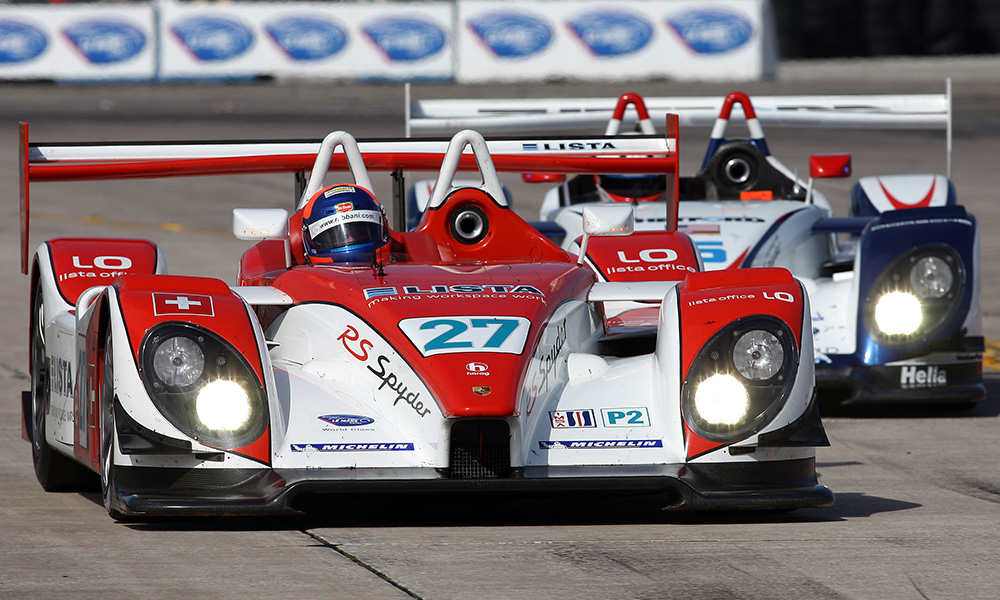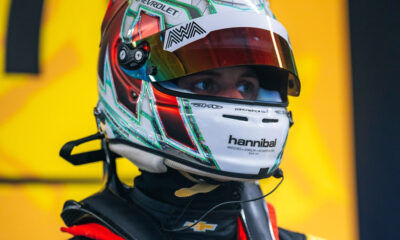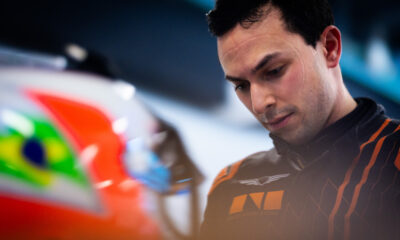
Photo: Porsche
Porsche is interested in supplying its LMDh car to customers after the program launches in 2023, according to the company’s head of factory motorsport Pascal Zurlinden.
Porsche has announced its return to prototype racing in the form of an LMDh program that will enable it to compete with the same car in both the FIA World Endurance Championship and the IMSA WeatherTech SportsCar Championship.
While full program details have yet to be confirmed, Zurlinden told Sportscar365 that Porsche is aiming to produce cars for customers in addition to the main factory-based efforts.
Zurlinden’s comments echo those of Audi’s head of motorsport Julius Seebach, who recently told Sportscar365 of his Volkswagen Group brand’s intentions to have both factory and privately-run customer team cars in LMDh.
“If you look at the history of Porsche Motorsport in the ’80s and ’90s, it was nearly standard to have customers in the top class, even fighting against the works teams and winning the biggest races,” said Zurlinden.
“If a Porsche wins, we are happy. So with this project, it could go back to our tradition or DNA.
“I think it’s easier [than LMP1] for teams to bring the car to the racetrack because of the lower complexity of the cars and the costs.”
The Porsche RS Spyder was the last prototype from Weissach to be run in customers’ hands, with Pickett Racing, Dyson Racing and Van Merksteijn Motorsport among the teams to have campaigned the LMP2 car in the late 2000s that featured a three-year factory campaign by Team Penske in the American Le Mans Series.
Porsche’s LMDh car will compete full-time in the WEC and IMSA, but it has not been decided if both of these efforts will be fully factory-led in a similar way to the manufacturer’s LMP1 program that ended after the 2017 WEC season.
“We decided to go for it because you are able to run the same car in IMSA and WEC, and we intend to run fully in both championships in 2023,” said Zurlinden.
When asked if both would be factory programs, he said: “This is in evaluation – if it’s factory, factory-supported or customers. Everything is possible.”
Zurlinden hopes that the possible mixture of factory and works-supported programs with independently-run customer efforts will lead to substantial car counts in the top category.
LMDh is due to debut in 2022 but current development timelines point to the following year as the earliest opportunity for a complete season in both the WEC – where LMDh entrants will compete against Le Mans Hypercars – and the WeatherTech Championship.
“We are still looking to see some big names coming out in the next six months,” said Zurlinden regarding the potential for new manufacturers.
“The more manufacturers you have, the better it is. But LMDh also gives the chance for private teams who can also fight for overall [wins].
“So if you have a grid between ten and 15 cars to start with, I think it’s a good number to have really nice fights. But it could become even bigger.
“We are convinced of this concept. For years the DPi class in IMSA showed that you can have outstanding motor racing at the highest level, but with controlled costs. Motorsport at the moment is really guided with maximum cost efficiency.
“The LMDh concept allows Porsche to continue to showcase the brand’s DNA which is endurance racing. It all fits together.”

Image: Porsche
Porsche to Lock in Chassis Partner Soon
Zurlinden explained that Porsche intends to have its LMP2 chassis supplier determined in “the coming weeks and months, early 2021.”
Once this aspect of the project has been confirmed, Porsche will be able to make further technical decisions over the following months.
No technical details of the Porsche LMDh have been revealed, bar the inherent facts that the car will be based on a next-generation LMP2 chassis and will utilize a spec 50 kW electric motor linked to an engine of the manufacturer’s choosing.
“Our next step will be to decide for which partner we will go for the spine, which will be ORECA, Dallara, Ligier or Multimatic,” said Zurlinden.
“We have a favorite, but it’s not done yet. Building on this decision, we will be able to build up our road map: you need to know when you are going to get parts and so on.
“The first step will be to choose our partner.”
The determination of a chassis supplier will also enable Porsche to outline in greater detail its plans for a customer program.
“‘In the end, it’s all about capacity and delivery times,” said Zurlinden. “But definitely we will not say ‘no thank you’ to a customer.
“We have an idea of a timeline in our heads, but first we need to have an agreement with our partner that is building the LMP2 spine.
“Without its delivery date, we cannot put down a timeline, so it’s too early to speak about it.”
Porsche’s choice of engine, meanwhile, is in “final evaluation” with Zurlinden hinting that a road-car based unit could form the base.
“If you look at all the Porsche sports cars that we have in our road cars [range], we have many powerful engines and we have evaluations to see what the best base is to build our LMDh engine on,” he explained.
“It’s in final evaluation. But as we have said, cost-efficiency is important for us, so a road-car based engine is always more cost-effective.”

























